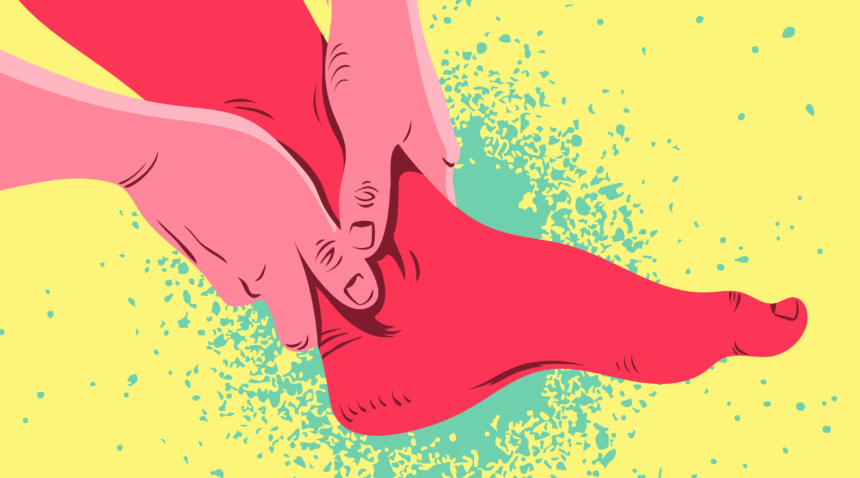When is a trip to urgent care for a sprain or strain necessary?
Trip and twist your ankle? Pull a muscle at the gym? Something hurts, but is it a sprain, strain or even a broken bone? We asked Jacqueline Myers, nurse practitioner with UNC Orthopaedics, to help explain.
Is It a Sprain, Strain or Broken Bone?
The words sprain and strain are commonly interchanged, but there’s one big difference between them: Sprains are associated with stretching and tearing of the ligaments, which are what connect bone to bone, while a strain is a stretch or tear in the muscle or tendons, which connect muscles to bones.
Sprains commonly occur in knees, ankles and wrists, while strains commonly occur in the back, quadriceps, hamstring, calf and the rotator cuff of the shoulder, Myers says.
If you actually break a bone, it’s called a fracture.
So how do you know when it’s time to see a health care provider for treatment and when to treat your injury at home?
“Most people will compare their injury to one they may have experienced before to determine if it is more severe this time. If they treated conservatively with rest, ice, compression and elevation previously with good results, they are more likely to try that on their own first,” Myers says.
Usually, if you cannot bear weight or use that part of your body, it’s best to have a health care provider take a look. Go to a specialized orthopedic urgent care, urgent care close to home, or an emergency department, Myers says.
Treatment for Sprains
If you have a mild sprain, you can treat it at home with rest, icing the injury, wrapping it in an elastic bandage or something similar, keeping it raised and taking an anti-inflammatory medication such as ibuprofen.
If you feel like it is serious enough to be seen by a provider, he or she will determine the best possible treatment based on the severity of your injury. This may require getting an X-ray.
If you cannot bear weight or use the body part, you may need a cast or boot and crutches.
“Also, physical therapy is a really important part of any sort of treatment program, especially for an ankle sprain. It helps with pain, function and preventing future injury,” Myers says.
Treatment for Strains
Treatment for strains depends on the severity of your injury and where it’s located. Mild strains can be treated at home with rest, similar to a sprain, while serious ones could require surgery.
“A muscle strain can include a complete tear of muscles, but some muscles can be torn and do not require surgical repair because they don’t significantly affect function,” Myers says.
For example, surgery is not always needed for a tear in your proximal biceps tendon that attaches to the front of the shoulder. But if you tear the distal biceps tendon that is near the elbow, you will probably need surgery because that injury affects your ability to use that part of your body. If you can’t use your arm normally, it’s best to see a health care provider.
Treatment for Fractures
While you might think all fractures would need a cast or surgery, Myers says that is not always the case. Once again, it depends on the severity of the injury and which part of the body is affected.
Fractures in fingers that appear small are sometimes significant and need more aggressive treatment such as surgery. “Fractures such as humerus (upper arm) fractures are often treated without surgery because the outcomes don’t change very much between having surgery and not having it,” Myers says.
If you suspect a fracture, it’s important to see a provider and to get an imaging study to know the right course of treatment.
When a Trip to the ER Is Warranted
Myers says sometimes you need to go to the emergency department if your treatment requires sedation or if the treatment you need is not available at an urgent care facility. She recommends starting with an orthopedic urgent care or a nearby urgent care, which will send you to an emergency room if needed.
“We know how to fill in the gaps in treatment so you aren’t waiting for what to do next,” Myers says.
Think you may have a sprain, strain or fracture? Call your doctor. If you don’t have one or need to be seen immediately, find a specialized orthopedic urgent care or urgent care near you.

